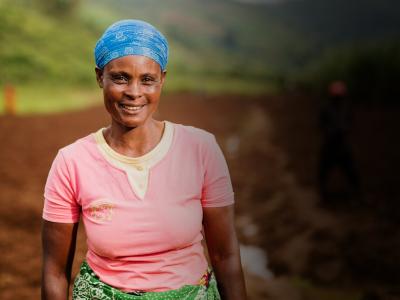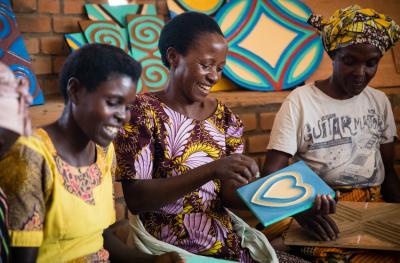At Women for Women International we use a lot of field based vocabulary that often has a much deeper meaning and greater implications than a simple definition. In this series, we will be addressing some of these terms in the hopes of giving YOU the tools you need to have conversations about women’s empowerment and gender equality. In this blog, we’ll be discussing gender-based violence.
What is Gender-based Violence?
Gender-based violence (GBV) is violence that is directed at an individual based on his or her biological sex OR gender identity. It includes physical, sexual, verbal, emotional, and psychological abuse, threats, coercion, and economic or educational deprivation, whether occurring in public or private life.
Why do we talk about GBV?
Gender-based violence is an issue faced by people all over the world. Women are disproportionately harmed by gender-based violence. That is why hundreds of organizations focus on ending violence against women. According to the United Nation’s Population Fund, 1 in 3 women have experienced physical or sexualized violence in their lifetime. That is not including emotional, financial, or verbal abuse. Despite being so prevalent, gender-based violence is largely under reported because of stigma and lack of access to resources and support systems.
GBV can impact anyone regardless of their geographical location, socio-economic background, race, religion, sexuality, or gender identity. While women and girls are the most at risk and the most affected by gender-based violence, boys, men, and sexual and gender minorities also experience gender-based violence. GBV can have serious physical, mental, economic, and social repercussions. For example. sexualized violence can lead to unwanted pregnancies, unsafe abortions, and STI transmission, as well as isolation and depression. It can also prevent survivors from achieving economic prosperity because of stigma or physical and psychological trauma caused by the violence.
The prevalence of gender-based violence worldwide is largely due to systemic gender inequality that disempowers women, girls, and other minorities, and stifles their voices so that their stories are not heard and their natural human rights can be more easily taken away. The cycle of violence is further perpetuated by lack of justice, a dearth of available resources, or lack of economic opportunities which leads to the survivor being dependent on the abuser. For example, in the United States about two percent of rapists are likely to face incarceration and perpetrators of honor-killing around the world are rarely persecuted. This allows violent groups and individuals to continue abusing their power without fear of repercussions.
Examples of GBV
GBV can manifest in many different forms, and it is important that we identify what qualifies as gender-based violence. Think of it as an act of violence that is directly related to or justified by using the gender of the victim or survivors. GBV can happen in the private or public sphere, in kitchens and bedrooms and streets, markets and boardrooms or in the refugee camps. It can include street harassment, i.e. groping, whistling, or unwanted attention in publish spaces, and marital rape and intimate partner violence. There are many forms of GBV that have been challenged as traditions in certain communities. Whether it is early marriages in certain US communities, rape in South Africa and other countries around the world, trafficking of persons in India, sexual violence in the Democratic Republic of Congo, femicide in Guatemala, female genital mutilation in Nigeria, so-called honor killings in Iraq or Pakistan, there is no justification for violence.
What is Being Done About GBV?
Since GBV is such a widespread issue, there are many organizations and sectors working to address and prevent it, including the private sector, multilateral agencies, governments, and NGOs including UN Women, USAID, and NGOs such as Women for Women International. UN Women promotes early intervention that focuses on promoting relationships between boys and girls based on respect and equality through education. USAID also emphasizes prevention through awareness, but also emphasizes the need for improved services for survivors of GBV. While the Global Fund for Women is supporting more localized efforts, such as working to end GBV in the garment industry in South Asia.
Here at Women for Women International, we work to address GBV through women’s rights education for men and women. We teach women about their rights so that they can advocate for themselves and other women in the community. It is also essential to teach men about women’s rights and their responsibility in defending those rights including preventing GBV. This idea is grounded in the idea that women and men are partners who should work hand-in-hand to achieve gender equality. For example, in Afghanistan at the beginning of our program 6% of men reported having a positive view on women’s role in family decision making whereas after the course, 99% of participants viewed women’s participation in family decision-making positively. In the countries, we work in men are 20% more likely to share information with their communities about the effects of violence against women after participating in our program. To prevent gender-based violence, we must engage men so they can be effective allies and start inclusive conversations about the issue in their communities and with their own peers.
Now that you know more about gender-based violence, we challenge you to start a conversation about gender inequality and violence against women.


